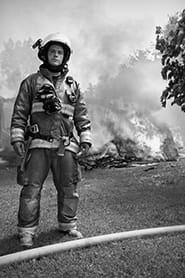Profession firefighter

Fire fighters respond to fire alarms and other emergency calls, control and extinguish fires, protect life and property and conduct rescue efforts.
Firefighter Jobs: Open positions
Find the job of your dreams on Talent.com, one of the largest job sites worldwide.
Job postings: talent.comPersonality Type
Tasks firefighter
- Respond to fire alarms and other emergency calls, such as road accidents, rail and air crashes, industrial accidents, spillages of dangerous substances, bomb incidents and natural disasters.
- Dress with equipment such as fire resistant clothing and breathing apparatus, and drive or crew fire fighting vehicles to travel to incident sites.
- Search, rescue and evacuate people and animals from burning buildings, accident sites and other dangerous situations.
- Administer first aid and other medical assistance to injured persons.
- Control and extinguish fires using firefighting equipment, such as ladders, hose pipes, pumps, axes and fire extinguishing appliances.
- Assess fires and situations and report conditions to superiors to receive instructions, using e.g. radios.
- Salvage goods from damaged premises, and clean up, check and make safe the incident site, e.g. by removing dangerous chemical substances.
- Dive to locate and lift objects from under water.
- Carry out practice drills and take part in physical and other training.
- Inspect, clean and maintain firefighting equipment.
- Inform and educate the public on fire prevention.
Related professions fire brigade
- Fire inspector
- First line supervisor of fire fighters
Knowledge
- Fire prevention procedures
The regulations concerning fire and explosion prevention, and the equipment, systems and methods used in it.
- Health and safety regulations
Necessary health, safety, hygiene and environmental standards and legislation rules in the sector of particular activity.
- First aid
The emergency treatment given to a sick or injured person in the case of circulatory and/or respiratory failure, unconsciousness, wounds, bleeding, shock or poisoning.
- Fire safety regulations
The legal rules to be applied for fire safety and fire prevention in a facility.
- Fire-fighting systems
The devices and systems used to extinguish fires; the classes and chemistry of fire.
- Hydraulics
The power transmission systems that use the force of flowing liquids to transmit power.
Skills
- Manage major incidents
Take immediate action to respond to major incidents that affect the safety and security of individuals in private or public places such as road accidents.
- Extinguish fires
Choose the adequate substances and methods to extinguish fires depending on their size, such as water and various chemical agents. Use a breathing apparatus.
- Use different types of fire extinguishers
Understand and apply various methods of firefighting and various types and classes of fire extinguishing equipment.
- Evacuate people from buildings
Evacuate a person from a dangerous building or situation for protection purposes, ensuring the victim reaches safety and is able to receive medical care if necessary.
- Select hazard control
Perform appropriate selection of hazard control measures and risk management
- Manage emergency care situations
Manage situations in which decision making under time pressure is essential to save lives.
- Provide first aid
Administer cardiopulmonary resuscitation or first aid in order to provide help to a sick or injured person until they receive more complete medical treatment.
- Perform search and rescue missions
Assist in fighting natural and civic disasters, such as forest fires, floods and road accidents. Conduct search-and-rescue missions.
- Ensure public safety and security
Implement the relevant procedures, strategies and use the proper equipment to promote local or national security activities for the protection of data, people, institutions, and property.
- Work as a team in a hazardous environment
Work together with others in a dangerous, sometimes noisy, environment, such as a building on fire or metal forging facilities, in order to achieve a higher degree of efficiency while heeding the co-workers' safety.
Optional knowledge and skills
environmental policy relay messages through radio and telephone systems contain fires work safely with chemicals assess contamination rescue in road accidents work with chemicals educate public on fire safety regulations on substances vessel electrical system install vessel's safety equipment avoid contamination types of maritime vessels industrial engineering dock operations climb trees inspect industrial equipment assist people in contaminated areas use geographic information systems evacuate people from heights assess risk factors mechanics of vessels manage personal professional development assist community use different communication channels perform risk analysis ensure vessel security perform minor repairs to equipment manage flammable substances operate marine machinery systems liaise with industrial professionals maintain logbooks operate emergency vehicle assess impact of industrial activities industrial tools pollution legislation investigate maritime accidents prevent marine pollution perform preventive maintenance on fire fighting vehicles operate marine communication systems manage factory operations dispose of hazardous waste maintain safety systems pyrotechnic articles legislation drive firetruck under emergency conditions navy operations monitor chemical process condition monitor disposal of radioactive substances operate emergency equipmentSource: Sisyphus ODB